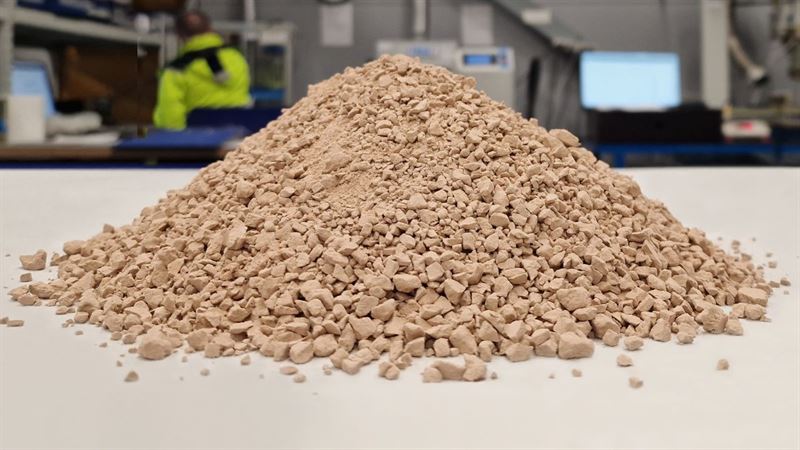
According to a recent report from Rethink Energy, post-Covid pandemic electric 2-wheeler sales are recovering globally. Since 2021, there has been marginal growth in the sector, with a move towards electrification. However, they expect that by 2027, over 100 million electric 2-wheelers will be on the roads globally.
At the end of 2022, the global fleet of 2- and 3-wheel vehicles was estimated to be 292.4 million vehicles. Most of these can be found in China and India. Though, there has been significant sales growth in African countries. Indonesia and Vietnam also have large numbers of 2- and 3-wheelers.
“2022 saw 2/3-wheel electric vehicle sales take up 49% of the total market, mostly because of China’s position as both the volume market leader and as the global leader in vehicle electrification, though other countries are continually picking up pace in electrifying new vehicle sales.
“China accounted for 53% of global 2-wheel vehicle sales in 2021, a staggering 70% of which ran on an electric motor. The country’s early dominance of the battery supply chain, the development of domestic manufacturing, and the country’s relatively poor population at the time are the primary driving factors of the country’s control of this industry. China manufactures a significant amount of electric 2-wheelers for its home market but also exports to surrounding countries, though some regions are becoming more independent with the shift to electric and providing subsidies for domestic manufacturing.”
India sold 13.6 million 2/3-wheel vehicles in 2021 — 1% of which were electrified. In 2022, 15 million were sold — 5% of which were electric. Pre-pandemic, in 2019, 21 million vehicles were sold — though, very few of these would have had an electric motor. The Indian government believes it has the right incentives in place to continue the climb from 5% onwards in 2023.
“Most of India’s 2-wheel EV sales are imported from China, owing to the country’s lack of domestic vehicle manufacturing infrastructure. This will change in the next decade or so due to policies such as the $3.5 billion Production Linked Incentive (PLI) which gives domestic manufacturers subsidies based on EV output.”
By 2026, Rethinik Energy expects that India will be mostly self-reliant due to the expansion of the manufacturing of electric 2- and 3-wheelers by both startups (like OLA) and traditional ICE manufacturers (like Hero moving across to join the rEVolution).
In Vietnam, Honda and Yamaha have lost market share for their ICE vehicles to EV startups like Vinfast, Pega, Anbico, DK Bike, and Detech.
“According to statistics from the Traffic Police, by the end of 2022, Việt Nam had nearly two million newly-registered electric motorbikes, accounting for 2.7 per cent of the total number of motorbikes nationwide. The sale of electric motorcycles in 2022 increased between 30-35 per cent compared to 2021.”
Although Honda and Yamaha dominate the Vietnamese market with about 90% share (2020 figures), their share is being eroded, down approximately 7% and 10% respectively (2021 figures). I would expect these figures to have already changed, as the market is moving rapidly to local production of electric vehicles.
“Neither Honda nor Yamaha have an electric 2-wheel vehicle on the Vietnamese market, despite EV penetration reaching 10% in 2021 and promising to climb higher as battery prices continue to fall and demand continues to increase. Failures from incumbent manufacturers to adapt to changing market dynamics are going to be a key factor in this market and will likely be replicated in the 4-wheel EV market.”
The bulk of global electric two-wheeler growth is expected to occur in India, Indonesia, and Vietnam. India will remain the only significant factor in 3-wheel vehicle demand. South America and Africa will likely grow their EV 2-wheeler fleet by importing vehicles from China and Southeast Asia. As demand increases, expect to see local manufacturing take root.
There is likely to be very little demand increase in Europe, North America, Australia, or New Zealand due to colder weather, distances travelled, and cultures that values car ownership more. Although, in Australia, we are seeing small inroads from local companies like Benzini, with its new Sport.
Many Europeans and North Americans are being encouraged to cycle in their congested cities and will increasingly turn to e-bikes. Australia’s capital cities are building out cycle paths for inner city residents.
Price reductions for 2-wheel EVs are expected as the markets shift away from lead-acid batteries towards low-cost lithium batteries like lithium-iron-phosphate (LFP) batteries. “The emergence of sodium ion batteries later in the decade will fuel the necessary price reductions to continue driving demand. Due to the relatively low range requirements enabled by battery swapping systems and the need to keep costs low within this market, if we assume an average battery size of 2.5 kWh, we see battery manufacturing requirements increasing from 71 GWh today to 228 GWh by 2030.” Furthermore, companies like RACEnergy and Gogoro and their battery swapping systems are pioneering a new way to look at range needs and battery sizes.
As the larger 4-wheel EV market expands, there may be some upwards pressure on prices for lithium carbonate, which may impact the manufacture of batteries for 2-wheel EVs. Rethink Energy expects such fluctuations mid-decade. “Despite this, LFP batteries will replace the use of lead-acid batteries in a vast majority of use-cases once costs fall further, which we expect to be after 2025/2026 due to expansions in lithium mining and processing capacity catching up with demand. Sodium batteries will also be a competitor later in the decade once production has hit significant quantities in China and costs start to come down as manufacturing processes mature.”
Interoperability between manufacturers of 2-wheel EVs will facilitate battery swapping infrastructure and battery-as-a-service agreements. Low-mileage batteries would not be such an issue in that case. In fact, it may be the cheaper option that allows for greater progress towards electrification of the fleet.
There will be some who will quibble that electric two-wheelers will not make much difference if India and China continue to rely on coal-fired power. But, observers of the renewable energy ecosystem comment that India and China are two of the most prolific installers of solar and wind power plants. The whole system is evolving together, and strawman arguments like this should not stop us celebrating the move towards 100 million 2-wheel EVs.
I don’t like paywalls. You don’t like paywalls. Who likes paywalls? Here at CleanTechnica, we implemented a limited paywall for a while, but it always felt wrong — and it was always tough to decide what we should put behind there. In theory, your most exclusive and best content goes behind a paywall. But then fewer people read it! We just don’t like paywalls, and so we’ve decided to ditch ours. Unfortunately, the media business is still a tough, cut-throat business with tiny margins. It’s a never-ending Olympic challenge to stay above water or even perhaps — gasp — grow. So …
Sign up for daily news updates from CleanTechnica on email. Or follow us on Google News!
Have a tip for CleanTechnica, want to advertise, or want to suggest a guest for our CleanTech Talk podcast? Contact us here.
Former Tesla Battery Expert Leading Lyten Into New Lithium-Sulfur Battery Era:
CleanTechnica uses affiliate links. See our policy here.







